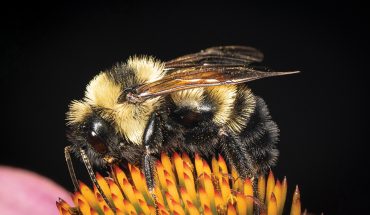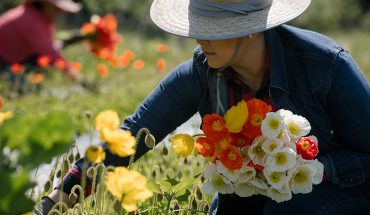by Tony Avent
illustration by Ippy Patterson
Aster oblongifolius – “Fanny” – and I go way back. Back to 1992, when I learned about it through Ruth Knopf, the antique rose expert at South Carolina’s Boone Hall Plantation near Charleston.
Aster oblongifolius is a North American native aster, although the taxonomic world is now trying to convince us that North American asters really aren’t asters at all.
I’m not jumping on that bandwagon. To me, they’re still asters.
Aster oblongifolius has a wide but scattered native range from Montana to Mississippi, with the center of distribution in Missouri and Kansas. In North Carolina, Aster oblongifolius is only found in Madison County, just before you cross into Tennessee.
We’re not sure exactly where Aster ‘Fanny’ originated, but it was given to Ruth Knopf by her maid who was, yes, named Fanny. Fanny said that the aster had been a passalong plant through generations of her family.
Ruth was so impressed with her new aster that she named it Aster ‘Fanny’ and subsequently shared the plant with Nancy Goodwin, who worked at a former mail order nursery called Montrose in Hillsborough. It was there that it first became available to consumers.
At the time, there were only two aster species being widely sold in the U.S.: Aster novae-angliae and Aster novae-angliae, both U.S. natives, but natives that had been refined and selected in Europe for their ability to tolerate cool summers. Aster ‘Fanny’ was one of the few highly ornamental asters that actually thrived in the heat and humidity of the southeast U.S.
Despite its fame among plant nerds who pored over the Montrose catalogs, Aster ‘Fanny’ never got the widespread popularity it deserved, probably because of its fall flowering time. Garden centers and big box stores are always more interested in plants that flower in spring when customers are shopping than those that flower at the tail end of the season, when most gardeners have thrown in the horticultural towel for the year.
Aster oblongifolius ‘Fanny’ is also large, so it’s not a plant for tiny city gardens. Although it tops out at less than 2 feet in height, it can easily have a 10-foot-wide spread when grown in rich, well-tended soils. You can, however, keep the width in check to a point, by growing it near other sturdy plants, which will actually force it to grow upward to 4 feet tall.
In the wild, Aster oblongifolius is found in dry shale, gravelly, or sandy alkaline prairie soils; but in the garden, it responds amazing well to slightly acid, compost-enriched garden soil and regular irrigation.
Regardless of how you grow Aster oblongifolius, as long as it’s in full sun for at least half a day, the sight of a clump coming into full flower in mid-October is nothing short of breathtaking.
Over a period of a week as the State Fair pulls into town, the 2-inch lavender daisies begin to open until you’re staring at a sea of incredible frost-tolerant color for the next month.
Not only are the flowers a reason to grow this, but the fragrant foliage also bears mentioning. Aster oblongifolius isn’t called aromatic aster for no reason. Although a stiff breeze can send the scent wafting through the air, planting Fanny’s aster near a walk or driveway is better, so the fragrance is released every time you brush against it. If you’ve got the space, consider plopping a big Fanny in the middle of your garden for a splendid fall show.




